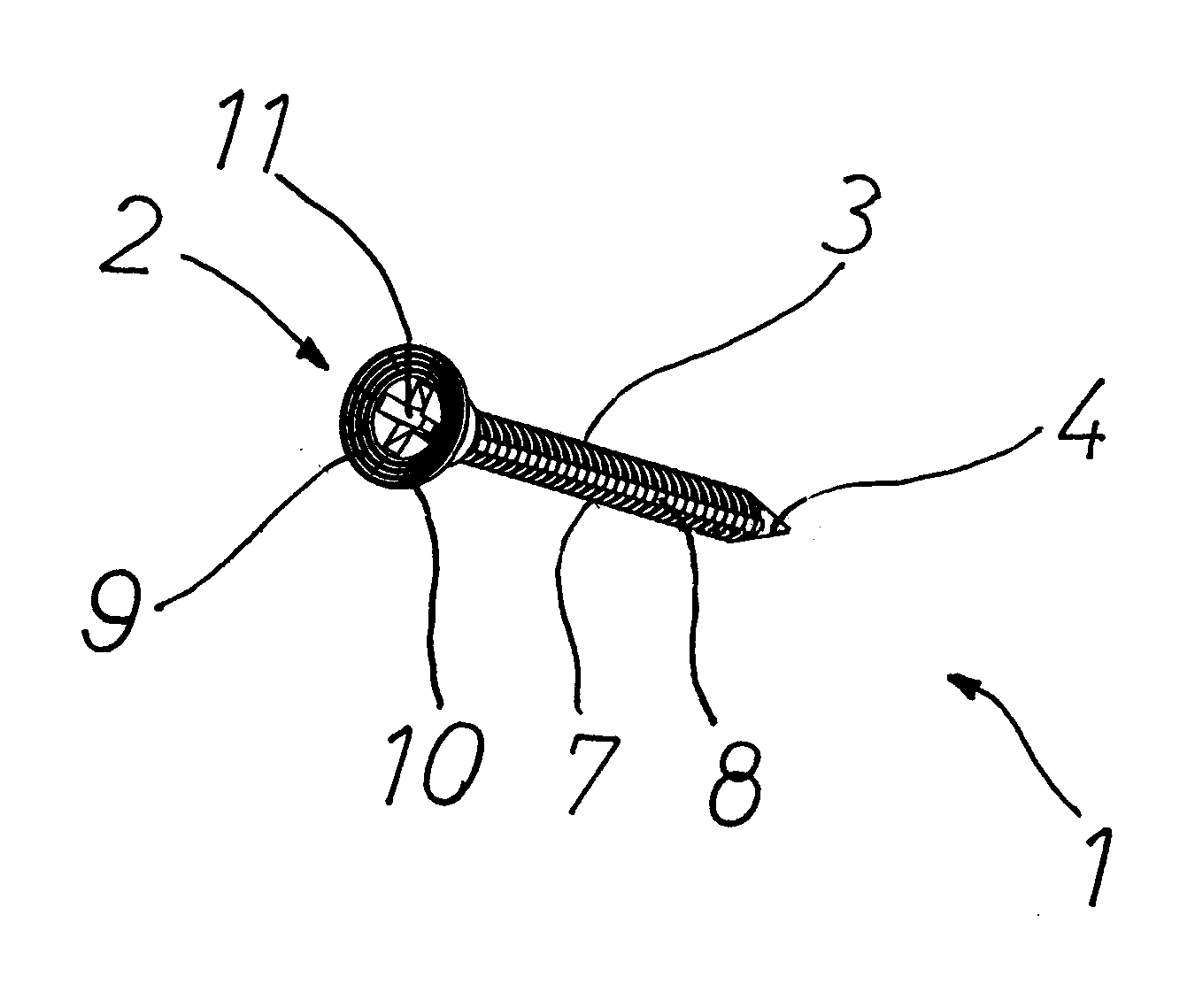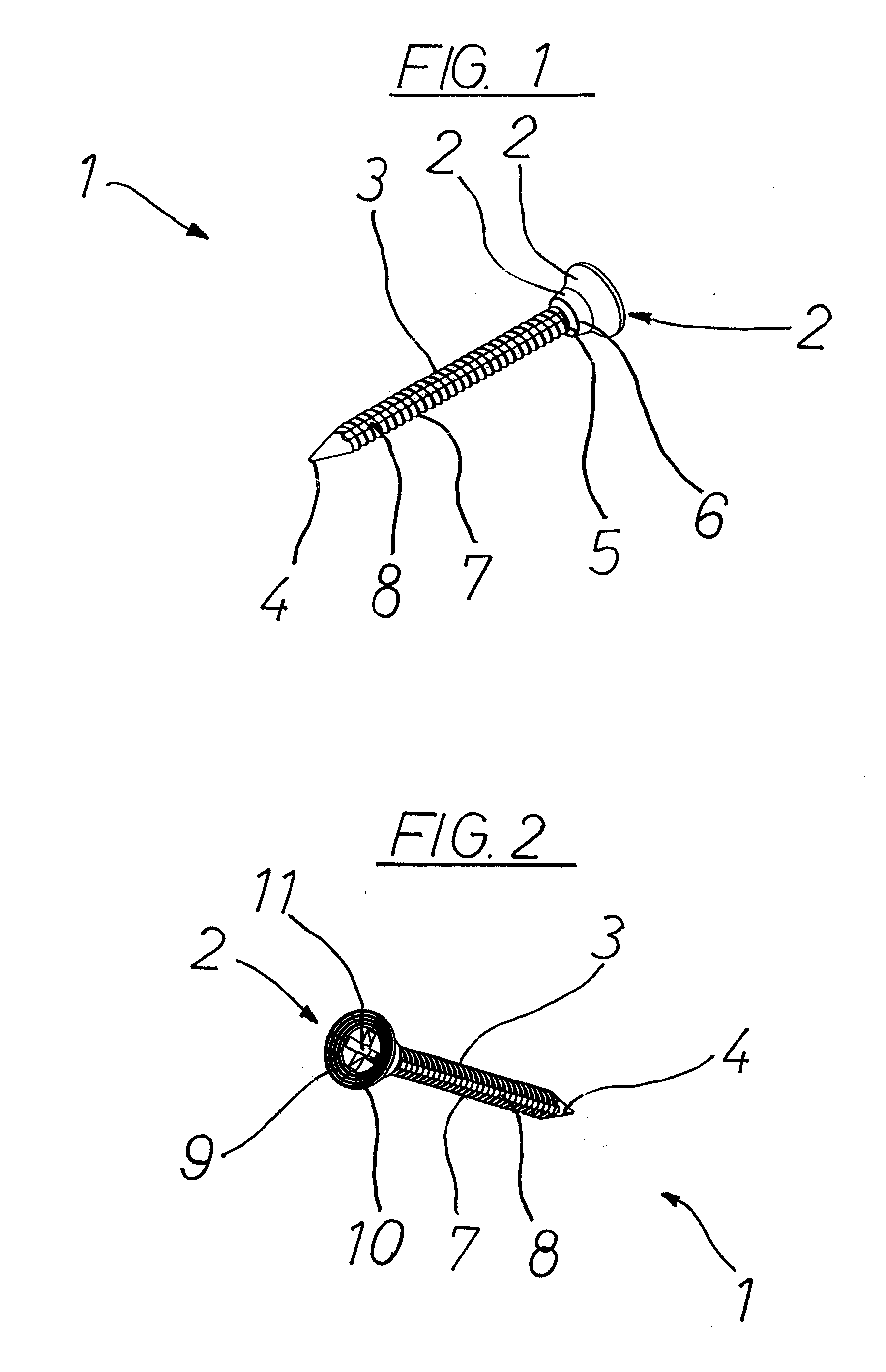Attachment means
a technology of fixing means and nail placement tools, which is applied in the direction of fastening means, screws, threaded fasteners, etc., can solve the problems of damage to the surface of two-dimensional components, filler can only be applied with considerable effort, and the appearance of fixing means used with nail placement tools is often visual, so as to improve the visual appearance of building materials
- Summary
- Abstract
- Description
- Claims
- Application Information
AI Technical Summary
Benefits of technology
Problems solved by technology
Method used
Image
Examples
Embodiment Construction
FIG. 1 shows a perspective illustration of an attachment means 1 according to the invention having a conically widening head 2.
Here the attachment means 1 is designed in the form of a screw nail and serves to join together two-dimensional components in dry construction by means of a nail placement tool, in particular for fixing two-dimensional building material onto a metallic substructure. The attachment means 1 has a shaft 3 on one end region of which the conically widening head 2 is formed, and on the other end region of which a point 4 is provided. The head 2 has two sections 2a and 2b with different conicities. Here the conicities of the sections 2a and 2b differ in that the diameter of the head 2 increases more greatly from its end facing towards the shaft 3 to its end facing away from the shaft 3 in section 2b than in the upstream section 2a. In other words, the conicity chosen in section 2b is greater than in section 2a.
On a face side 5 of the head 2 facing towards the shaf...
PUM
 Login to View More
Login to View More Abstract
Description
Claims
Application Information
 Login to View More
Login to View More - R&D
- Intellectual Property
- Life Sciences
- Materials
- Tech Scout
- Unparalleled Data Quality
- Higher Quality Content
- 60% Fewer Hallucinations
Browse by: Latest US Patents, China's latest patents, Technical Efficacy Thesaurus, Application Domain, Technology Topic, Popular Technical Reports.
© 2025 PatSnap. All rights reserved.Legal|Privacy policy|Modern Slavery Act Transparency Statement|Sitemap|About US| Contact US: help@patsnap.com



